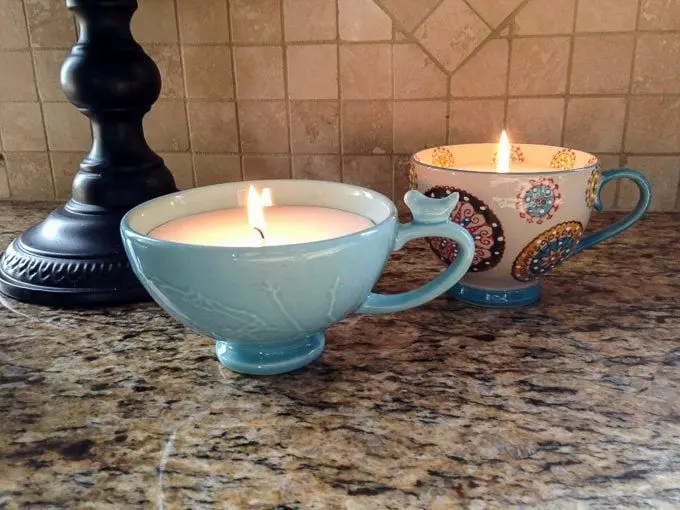What Is The Least Toxic Candle?
There are growing concerns about the toxicity of candles, as studies have found that burning candles can emit harmful chemicals like benzene, toluene, and formaldehyde into the air. These chemicals come from materials commonly used to make candles, like synthetic fragrances, dyes, wicks containing lead or zinc, and paraffin wax made from petroleum.
Many people enjoy candles for mood-setting ambiance and pleasant scents. However, inhaling toxic fumes over time from certain candles may lead to headaches, lung irritation, worsening asthma symptoms, and other health issues. That’s why it’s important to choose less toxic, natural candle options whenever possible.
Non-toxic candles are often made from plant-based waxes like soy, coconut, or beeswax and use natural cotton wicks and essential oil fragrances. Burning cleaner candles can provide aroma therapy benefits while avoiding exposure to hazardous chemicals. Less toxic alternatives are better for human health and create less indoor air pollution.
Candle Wicks
The wick is a key component that contributes to a candle’s toxicity. Many conventional candles use wicks made from materials like lead, zinc, or tin which release heavy metals into the air when burned (https://homesteadandchill.com/natural-vs-toxic-candles). Lead wicks are especially concerning as they can release up to five times the amount of lead considered hazardous by the Consumer Product Safety Commission (https://homesteadandchill.com/natural-vs-toxic-candles).
Safer options for wick materials include cotton, wood, and paper. Beeswax and soy wax candles often use cotton wicks which don’t release toxic substances. Wooden or paper wicks made from natural materials are also non-toxic options. When shopping for candles, check the wick composition and avoid any made from metal alloys. Opting for phthalate-free candles with cotton, wood, or paper wicks is the safest choice.
Fragrance
Many candles contain synthetic fragrances that can irritate the eyes, skin, and respiratory system. According to a 2015 study, scented candles release volatile organic compounds (VOCs) which can cause headaches, dizziness, and nausea when inhaled. Look for candles made with essential oils and natural extracts instead of synthetic fragrances. Brands like Mrs. Meyer’s and WoodWick use more natural fragrance alternatives that are less likely to cause irritation.
Paraffin Wax
Paraffin wax is commonly used to make candles because it is generally cheaper to produce than natural waxes like soy or beeswax. However, paraffin wax has some concerning toxicity issues.

According to Happy Wax, paraffin wax is a petroleum byproduct made from crude oil refining. It can contain known carcinogens and toxins like toluene and benzene [1]. When burned, paraffin candles release these toxic chemicals into the air. Studies show emissions from paraffin candles contain toxic compounds like acetone, phenol, and xylenes [1]. These chemicals have been linked to asthma, allergies, headaches, and other health issues.
Natural waxes like soy, coconut, beeswax, and palm provide safer alternatives to paraffin. Soy candles burn clean without producing soot or releasing harmful fumes. Beeswax and coconut wax are also non-toxic options. While not perfect, these natural waxes are generally considered less toxic than paraffin [2].
Dyes and Colorants
Some synthetic dyes used in candles can emit harmful volatile organic compounds (VOCs) when burned, especially petroleum-based dyes. Avoid dyes made from toxic chemicals like benzene, toluene, and xylene which are known carcinogens.
Instead, opt for natural, non-toxic dyes made from fruits, vegetables, and minerals. Safer options include dyes made from turmeric, annatto, beet powder, chlorophyll, indigo, and iron oxide. Brands like ECO Liquid Dyes and CandleScience offer non-toxic, organic compliant dyes.
Plant-based dyes not only minimize exposure to harmful VOCs, but can add therapeutic aromas to your candle. Always check labels and ingredient lists to ensure dyes are natural and free of solvents.
Lead in Candle Wicks
Some candle wicks contain a lead core that helps the wick stay rigid and upright as the candle burns. However, this lead core can contaminate the candle wax and release lead vapors into the air as the candle burns. According to the U.S. Consumer Product Safety Commission (CPSC), burning a candle with a lead-cored wick can result in high levels of lead in the air (https://www.cpsc.gov/Newsroom/News-Releases/2003/CPSC-Bans-Candles-With-Lead-Cored-Wicks).
In 2003, the CPSC banned the manufacture and sale of candles with lead-cored wicks in the United States. All candle wicks are now required to be lead-free. Consumers should check candle labels for an indication that the wicks are lead-free or made from materials like cotton, wood, or paper. Lead-free wicks are safer and do not release toxic lead vapors.
Testing and Certifications
When looking for the least toxic candle, it’s important to select brands that undergo reputable third-party testing. Organizations like Intertek test candles for lead, heavy metals, and other toxic chemicals in the wicks, dyes, waxes, and fragrances.
Look for candles certified by organizations like the USDA Organic program. The USDA Organic seal means at least 95% of the candle’s ingredients are certified organic, and it has met stringent production and handling standards to minimize contamination. According to the USDA, “Organic-certified candles must be made without potentially harmful chemicals, synthetic fragrances or dyes.”
Reputable third-party testing and certifications like USDA Organic provide assurance that a candle has been thoroughly evaluated for toxic ingredients and emissions. When shopping for non-toxic candles, certified organic and independently tested products are safest options.
Safest Candle Brands
When looking for low-toxicity candles, some of the best and safest brands to consider include Fontana Candle Co., Makesy, Orbasics, and Handsome in Venice.
These brands use cleaner wax alternatives like soy, coconut, or beeswax rather than paraffin. They also avoid synthetic fragrances and instead use natural essential oils or subtle scents. When scanning ingredient lists, look for words like “pure”, “natural”, “organic” and avoid anything synthetic. The safest candles will be phthalate-free, have cotton wicks, and use food-grade dyes. Reputable third-party certifications like USDA Organic and NPA Natural Product Certification can also help identify truly non-toxic options.
With safer ingredients and conscientious production methods, these brands offer guilt-free, aromatic ambiance. Their candles still provide delightful scents and warm glows but without the unwanted chemicals and toxins found in many conventional candles.
Making Your Own
Making your own candles at home has numerous benefits over buying pre-made candles. You can control the ingredients and avoid toxic additives like paraffin wax and synthetic fragrances. Homemade candles also allow you to create customized scents and choose eco-friendly materials like soy wax and cotton wicks.
Here is a simple recipe and instructions for making basic soy candles at home:
Ingredients:
- 1 lb soy wax
- 1 oz essential oil or fragrance oil for scent (optional)
- Pre-tabbed or pre-waxed wicks
- Candle making thermometer
- Candle making pitcher or double boiler
- Candle jars
Instructions:
- Prepare your candle making workspace and gather all materials.
- Cut wick to size and attach wick tab at bottom of jar using hot glue.
- Melt soy wax in a double boiler on medium heat until completely liquid.
- Remove from heat. Add 1 oz of essential oil per pound of wax if desired for scent.
- Carefully pour wax into jars around wick. Leave room at top for second pour.
- Let candles fully cool and harden. Trim wicks to 1/4 inch before lighting.
For more tips and recipes, check out this guide on making homemade natural candles.
Safely Enjoying Candles
When burning candles, it’s important to follow some basic safety guidelines to reduce exposure to potentially harmful chemicals and prevent fires.
Make sure to burn candles in a well-ventilated area. Avoid drafts or air currents, as these can cause uneven burning, sooting, and dripping (https://candles.org/fire-safety-candles/). Open a window, use a fan, or light a candle in a room with good air circulation.
Trim the wick to 1/4 inch before lighting to prevent excessive smoking and soot. Use a wick dipper or scissors to trim the wick.
Choose unscented or naturally scented candles when possible. Artificial fragrances can contain chemicals like phthalates and volatile organic compounds (VOCs) that can be irritating (https://nypost.com/2023/11/29/lifestyle/burning-scented-candles-comes-with-serious-safety-risks-follow-these-tips-to-avoid-hazards/). Go for soy, beeswax, or vegetable-based waxes over paraffin.
Never leave burning candles unattended. Extinguish candles before going to sleep. Use a candle snuffer or wet fingers to put out the flame.
With some simple precautions, you can safely enjoy the ambiance of candles in your home.



